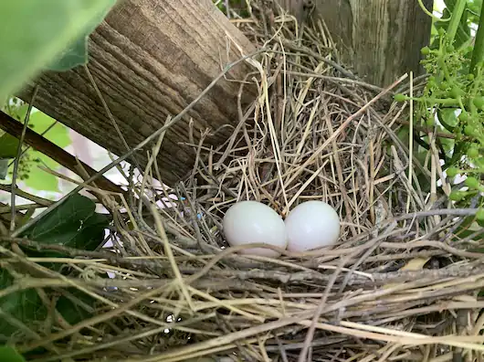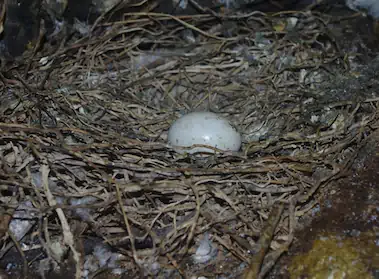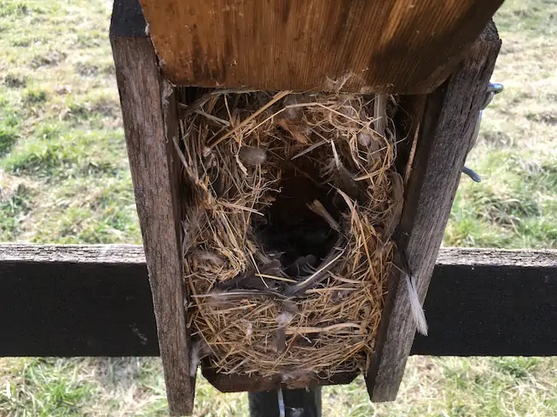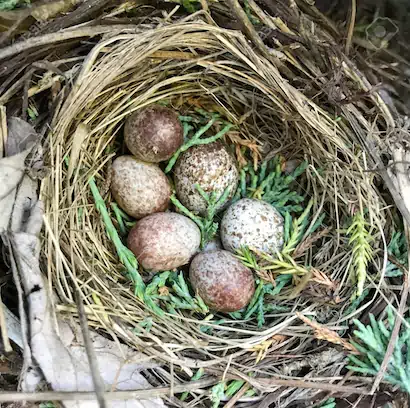Everything You Ever Wanted to Know About Removing Birds Nests
- Aviaway Bird Blog
- Sep 22, 2021
- 5 min read
Updated: Aug 30, 2022
There are many laws preventing disturbance of most active birds' nests, but a few invasive species don't have the same protection other species have, and therefore in most areas of the country you are able to remove, relocate, or dispose of the nests.

The absolute most important step in the removal or relocation of a nest is to make absolutely certain of the species of bird you are dealing with. The species not protected under the Migratory Bird Act are Feral Pigeons, European Starlings, and House Sparrows. Waiting until these birds leave the nest is oftentimes futile, as all three of these species reuse their nests several times a year, and with each brood comes a higher risk of transmission of disease and other pests like bird mites.
When trying to identify the species of bird, here are some tips on the appearance of the nest and potential eggs inside.
Pigeon Nests
A tangle of grass stalks, pine needles, twigs, and other debris resembles a jumbled mess. Because a nest is used all year, it will begin to accumulate more droppings and feathers. Pigeons do not remove droppings from their nests; instead, they let them accumulate so as to strengthen the nest's structure over the course of the year. Often there will be one or two medium-sized white eggs when the nest is active.
New pigeon nest Old pigeon nest
House Sparrow Nest
House sparrow nests are easy to identify as they always have a dome-shaped covering, and like the pigeon, nests will have droppings and feathers inside. In most cases the feathers are built into the nest structure along with other debris the house sparrow may find nearby, making the nest appear similar to trash. Since these are small birds, they will often try and take over birdhouses from other small birds like the Eastern Bluebird. The eggs appear to look like small round stones, as they are brown and white speckled.
House Sparrow Nest House Sparrow Eggs
Starling Nest
The starlings' nest is often discovered in birdhouses, as they prefer to nest in holes and cavities, especially trees, but they may also use holes in buildings, including occupied homes. They can be very aggressive when defending their nesting sites against potential predators, including humans, so be wary if you think you may have a starling nest on your hand. The starling is known as a cavity nester which makes it capable of building its own nest; however, they will also take over another bird's nest, driving them out and sometimes destroying the other bird's eggs in the process. Starlings use whatever material is nearby, so depending on the location the nest could contain a variety of materials. You can identify it by the larger pilings of materials towards the front of the nest, nearest the entry point, with an indent for eggs in the very back of the nest. The starling's eggs are very similar to a robin's egg, the difference being a starlings egg is slightly smaller, and slightly darker blue.
Starling nest with eggs
If you encounter either of these three types of nests and are absolutely certain they are not of another species, you are permitted to remove or relocate them should they be in an inconvenient location, even if it is breeding season.
Steps to removing and discarding a bird's nest
Before touching the nest, you'll want to wear protective gear, heavy-duty gloves, and a PPE mask are mandatory, a
s bird droppings that are disturbed have a high likelihood of becoming widely airborne, and can carry a number of diseases.
You will also want to spray antibacterial spray onto the nest and allow it to completely dry before handling the nest.
Once dry, ensure you have prepared a plastic ziplock bag, or another securely sealed container, that you immediately place it into and seal.
At this point, you can dispose of the container with the nest in it into a trash can a good distance from the home.
After taking all of these steps, ensure that you properly sanitize anything that came in contact with the nest and wash your hands thoroughly. It is also advisable to block entry to the location the nest was in, as the birds might try to build another nest in the same location instead of looking elsewhere. If you keep the area blocked off for the rest of the breeding season then you won't have to worry about another nest appearing there.
The best material to use in blocking off the area is UV-protected bird netting, made to keep birds out and resist wearing away from the elements.
How to relocate a birds nest

If you are not looking to discard the nest and only relocate it, yet there are eggs in the nest, it is highly recommended that a professional is called. If proper precaution is not taken, oftentimes a bird will not return to the nest and simply build another one in its place. The eggs are abandoned, and it makes for an unfortunate sight to anyone who next comes across it.
If there are no eggs in the nest, an attempt to relocate it can be made. The best way to do so is by purchasing a hanging plant liner and basket, such as the example above, and following the steps below.
Before moving the nest, you'll want to wear protective gear, heavy-duty gloves, and a PPE mask are mandatory, as bird droppings that are disturbed have a high likelihood of becoming widely airborne, and can carry a number of diseases.
Avoid touching or disturbing the appearance of the nest too much, and set the basket as close to the nest as possible.
Lightly and carefully lift the nest from its current location and immediately place into the basket, with caution.
Once in the basket, use a long pole with a hook to take the basket, and relocate the entire basket with the nest inside it to a nearby branch far enough away from buildings, structures, or anything they risk damaging.
Sanitize everything that came in contact with the nest once the process is complete
Again, there is a chance the bird may reject the relocation of the nest and attempt to rebuild in the original location, so it is important to block off the area with bird netting to avoid having the same issue all over again. Getting a professional bird netting installation will ensure a long lasting bird deterrent, so you will never have to worry about coming in contact with bird nests or other bird materials again.
If you need to relocate a bird's nest that was not one of the three species listed above, you MUST call professionals to assist in the relocation. Professional technicians or environmental groups know the laws and regulations around how relocating nests is done and can advise on whether it is best to leave the nest un
til the end of the season or if they can relocate it for you.
If you try to complete the task yourself, you risk breaking the migratory bird protection laws outlined in the Migratory Bird Treaty Act and other , which can result in a misdemeanor or felony charge. A misdemeanor conviction can get you up to six months in jail and a fine of $15,000.
If you ever have any questions about removing bird nests or birds themselves, don't hesitate to reach out to one of our certified specialists who can advise you on next steps. AviAway professionally installs bird control solutions for all bird species. We have 30+ years of experience in bird control and have performed work for companies like Amazon, Rite Aid, and the U.S. Postal Service. Click here or call 844-247-3373 to request a free bird control quote.
We also offer free bird control consultations. Click here to set up a free consultation and talk with one of our bird control experts about solving your bird problem.








































Comments